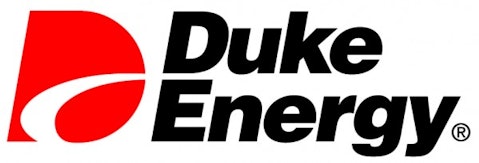Lately, lower unemployment and an uptick in business activity have been tailwinds for the utility industry. For those looking for dividend income and exposure to the regulated utility industry, the sector ETF Utilities Select Sector SPDR (NYSE: XLU) is a good option with a respectable 4.0% yield. For those aiming higher, we have a couple picks in the sector with stable earnings and potential future dividend hikes.

Duke Energy (NYSE: DUK), held by fund managers Michael Messner, Louis Navellier, and Louis Bacon, yields 4.7% and is attractive among large cap utilities. DUK has announced a merger with Progress Energy (NYSE: PGN), which is likely to remain a short-term concern amongst investors. There was a hiccup in the merger proceedings last December when the Federal Energy Regulatory Commission (FERC) rejected the power mitigation proposal. Both companies have been working on revising it to address regulators’ concerns. Completion of the merger by mid-year may be aggressive but ultimately, we feel DUK and PGN will receive regulatory approval. From a numbers standpoint, the merger seems like it may dilute standalone earnings, but according to the companies, cost synergies could drive accretion. Some analysts have estimated breakeven levels for the DUK/PGN pro forma company if both deliver ~10% O&M synergy savings. In spite of the potential for initial dilution, we believe the combined company will continue to grow earnings and the dividend moving forward.
In FY2011, DUK reported earnings of $1.46 per share versus $1.43 per share in FY2010, driven by strong performance in the international business and stable contribution for its commercial power business. Management presented 2012 earnings guidance of $1.40 to $1.45 per share (this does not factor in the aforementioned PGN merger). Additionally, DUK indicated that it plans to achieve a CAGR of 4% to 6% off 2009 figures. Though not extraordinary, we found DUK’s 2011 performance to be satisfactory given unfavorable weather conditions that did not affect 2010 performance. Further growth can be expected from the three projects DUK plans to bring online in FY12: the 618 MW Edwardsport IGCC facility, the 825 MW Cliffside clean-coal facility, and the 620 MW Dan River CCGT facility. Given that DUK trades at a discount to large cap regulated utilities, 14.5x P/E versus ~14.9x 2012 P/E, respectively, DUK may have a slight multiple expansion opportunity.
PP&L (NYSE: PPL) yields a cool 5.1%. The large earnings range $2.15-$2.45 that management gave for 2012 raised eyebrows since it is well-known that the Company has hedged significantly. It is likely that management is trying to prevent a future earnings disappointment. The UK Midlands acquisition seems to be undergoing a smooth integration; if O&M synergies are realized that will help drive earnings. However, uncertainty regarding a mild winter in recent history and a weak economy are still overhangs.
PPL has been on somewhat of an acquisition spree over that past couple of years. The resulting company is a much more regulated one. We found the February dividend increase announcement to be positive, demonstrating the Company’s financial strength in the face of dilutive financings and consolidation of acquisitions. Many analysts still view PPL as in a transition period and meaningful EPS growth unlikely in the near-term though upcoming distribution rate increase filings (PA in Q1 2012 and both KY utilities in Q2 2012) should help. Overall, we like the shift that PPL has made to more regulated assets to prepare for harsher environmental regulations and the performance of the UK business.
Competitor Atlantic Power (NYSE: AT) has an 8.3% dividend yield but the Company had weaker-than-expected fourth quarter revenues, missing consensus estimates. Cash available for distribution also came in lower at $1.05 versus $1.10 in the prior year (consensus was at $1.13). The 2011 payout ratio was 105%, which fits in management’s desired range though is higher than the 2012 guidance of 90%-97%. Analysts note that the 2012 payout includes earnings from the Florida that will expire soon in 2013. We are not bullish on AT’s prospects and feel that the dividend may not be sustainable if cash available for distribution continues to decline. If all goes smoothly and the Rockland Wind project goes commercial in November of this year, that will help support earnings. However, all in all, we feel there are better options in the regulated utility space.